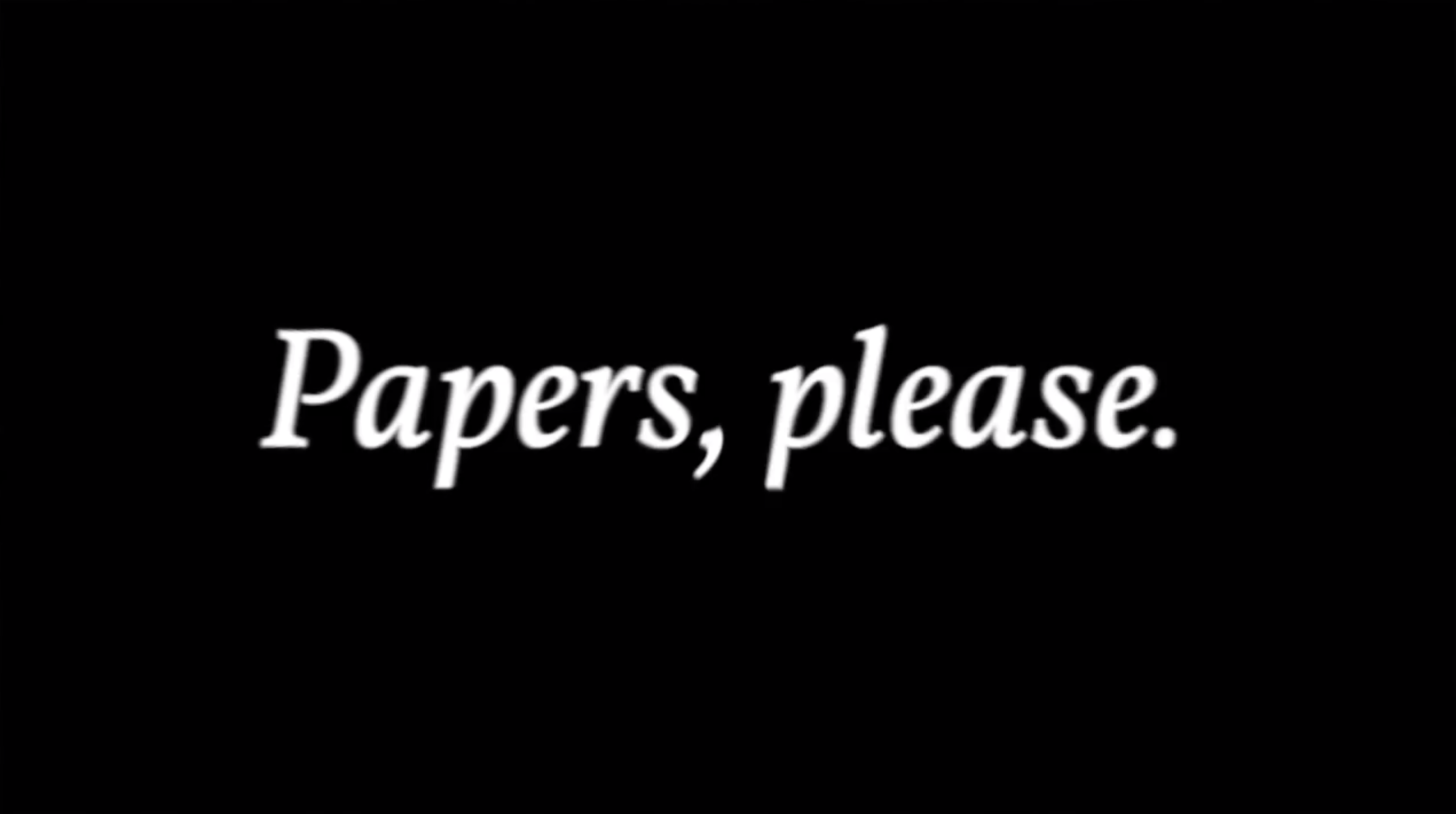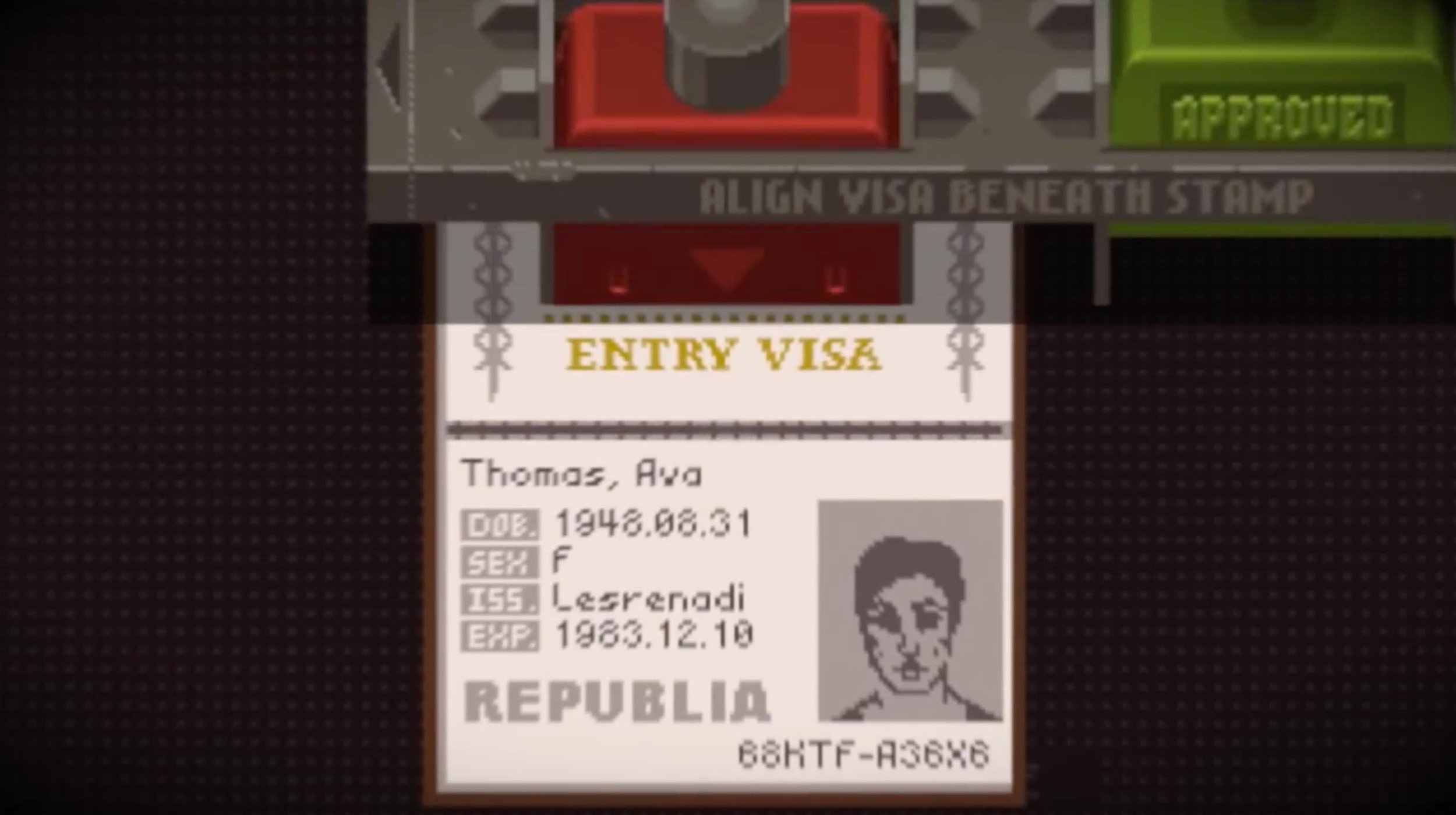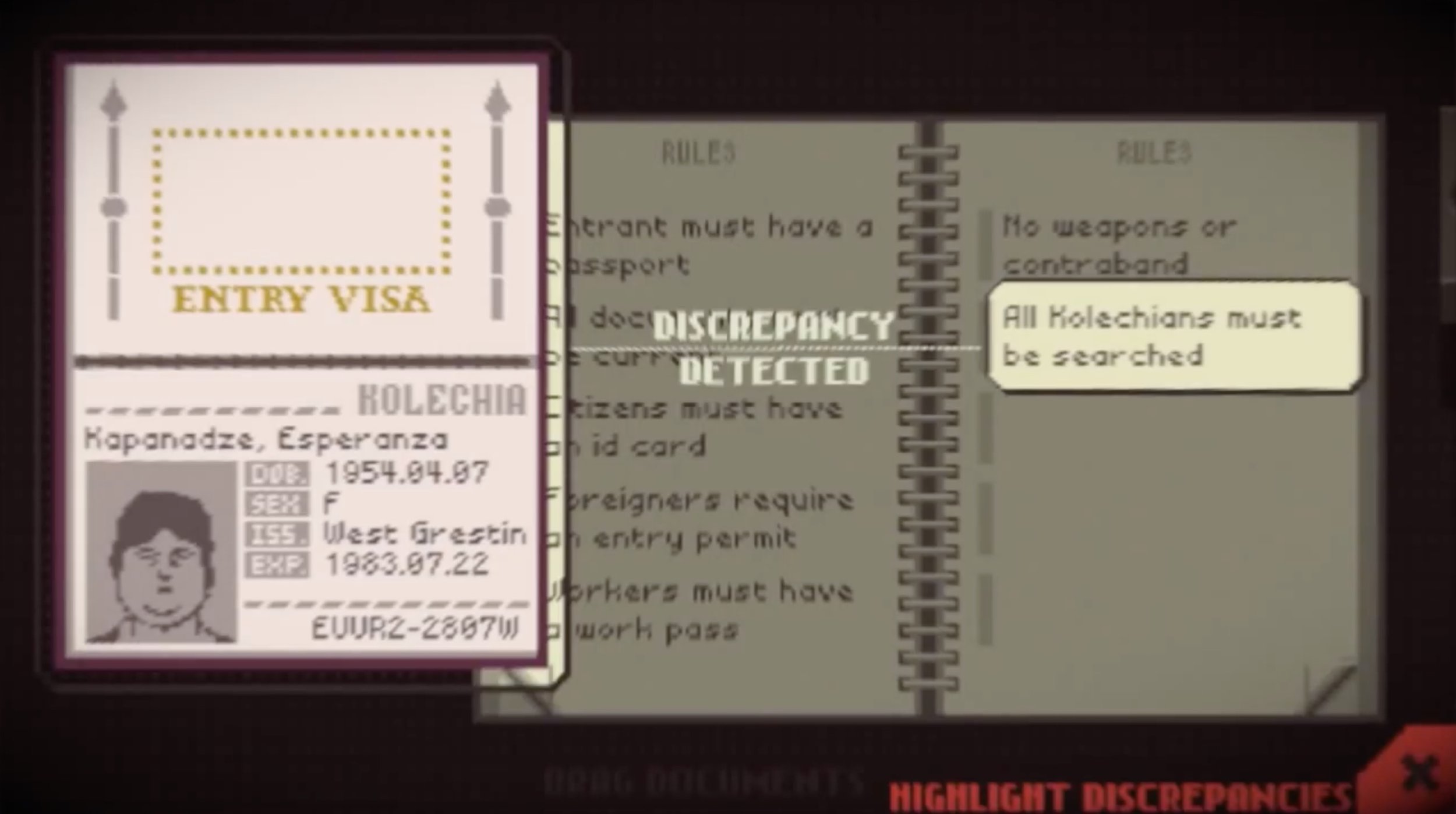Trailer Review - Papers, Please
Papers, Please is a game made by Lucas Pope set in the 1980s where you play a border immigration officer in the fictitious Eastern European nation Arstotzka. Your job is to and approve or reject the entry of potential immigrants based on the constantly changing rules set by your oppressive government.
The trailer starts with a silent shot of guards at the border which pans over to the long line of people hoping to get through; a person is called into the immigration booth. A metal grate opens on the face of a woman. It cuts to black on the first beat of the music, the title card appears one word at a time in sync with the music: "PAPERS, PLEASE." I love how the title does double duty as character dialogue. This is probably the only time I've seen a trailer for a game which justifies putting its title at the beginning.
Only 12 seconds in, the trailer has well established the game's setting and premise. The gray visuals, and the sound design of the ambience and rusty metal grate immerse you in the world. The slow pace of the opening enhances the sense of waiting in line at the border. The music seals the deal; you are in Arstotzka.
Something else to note is as soon as the music starts, there's no more sound design. This enhances the cold and impersonal feeling of the montage by pulling us out of the scene; we're now viewing this all occur from the outside.
It looks like the title was deliberately blurred out to make the video seem older.
After the title card we see a passport slide into the booth which swipes over to the right. There's a cut on motion to reveal the passport, a receptacle for rubber stamps pops in, and rejects the entry. Every action cuts in time to the slow, and plodding music. Cutting action on the beat is usually something which editors do to make trailers more exciting, but in this case, the editing makes the act of rejection feel slow, deliberate and harsh; syncing actions to the music adds personality to the protagonist's actions. The passport is given to the woman, and she walks back out.
The tempo of the music increases, and a man is called into the booth. There's a new title card: "Glory to Arstotzka"; we see the emblem of Arstotzka. This gives the trailer the feel of a propaganda video, further cementing the atmosphere of the game.
Another passport is rejected.
By this point, the trailer has done its job of showing the audience the idea of stamping passports. The next shot fleshes out the story a bit more with a shot of a newspaper about the border opening and families potentially being reunited.
In the game, the passport can be placed in this space anywhere, and the stamp doesn't have to be made precisely in the box, but doing it this way makes it very clear, and adds a bit of personality to the character.
The tempo of the music continues increasing, and we see a person vaulting over the border intercut with more passport rejections. The person throws an object which explodes on a musical flourish.
The trailer then shows how the game gets more complex because the next person in the booth has even more papers than a simple passport; the items are spread across the screen along with a rule book for approving/rejecting people. Some game UI pops up as some items are highlighted; a discrepancy is detected between the rules and the papers.
The person is rejected.
The next person comes into the booth; she hands over her papers. There's a closeup on the rule book dictating all Kolechians must be searched. She is a Kolechian. There's a closeup of a "Search" button popping out. X-ray photos reveals her partially naked body and a gun taped to her back; there's a closeup on the gun. The music reaches its climax; there's a fast montage of a variety of faces and passports whizzing by and being rejected.
The visual communication of the game is very clear, so this transfers over to the trailer!
The trailer ends on: "Immigrating Summer 1983 PC & MAC" and the final logo reveal for: "Papers, Please: A Dystopian Document Thriller."
I LOVE this trailer. The direction, visuals, sound design, editing and music are fantastic. We know where the game is set, what the player does in the game, and we get a tease of what's at stake with the person throwing the explosive at guards.
If you haven't played Papers, Please what you don't know is what the game looks like while you're playing it. Take a look:
As you can see, there's a lot on screen as you play it. The view of the border is at the top of the screen, the bottom left has the applicant, the slot in the booth, and the bottom right is your desk; this is a lot to process.
The trailer smartly isolates each part of the game using closeups; we never see the entire game interface all at once, only what is needed to communicate each idea. Whenever people ask me when the game's HUD should be visible (especially with games where the HUD is an inescapable part of the game), this is an excellent example of how to use closeups to isolate the important information.
For Papers, Please isolating information was as easy as using zoomed in footage, but for other games with a lot of HUD elements like Into the Breach, it would take extra work by either the editor or game developer to strip away what isn't necessary for a particular shot. Papers, Pleaseis also at an advantage because its pixel art permits the closeups. Some 3D games or games with line art don't always look good when the footage is zoomed in, so that cuts down their options. Pixel art can be scaled up in After Effects using nearest neighbor scaling to minimize the blurriness, but the blurriness here may have been a stylistic choice just like how the titles are blurry.
This is a phenomenal trailer. It immerses you in the world, establishes the protagonist, the game mechanic, gives a taste of how events in the game escalate, and makes it very exciting. In an interview with Noclip, Lucas Pope said considering how a game would look in a trailer is part of his process for coming up with new game ideas. More game developers should do this exact thing not only for marketing purposes, but to help the visual design of their game!




